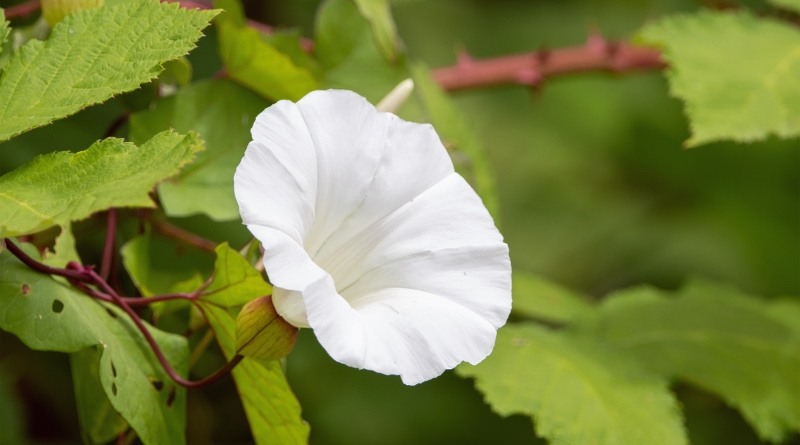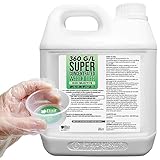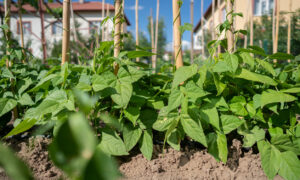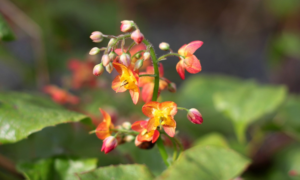We independently research, review, and recommend the best products. If you buy something through our links, we may earn a commission. Learn more.
Bindweed – the bane of every gardener’s life. Also known as Convolvulus arvensis, this is a highly invasive plant that can quickly take over if left unchecked. It may look innocent enough, but don’t be fooled: its long, creeping roots can grow deep into the soil, making it notoriously difficult to eradicate.
Spent more time than you care to admit pulling bouquets of bindweed out of your beds? Looking for answers? You’ll be pleased to learn that I have a few.
In this article, I’m going to share everything I’ve learned about ridding bindweed. We’ll cover everything from identifying this pesky plant to prevention methods and control tricks. So grab a cup of tea, kick up your feet, and let’s talk about how to give bindweed the boot!
Contents
Identifying bindweed
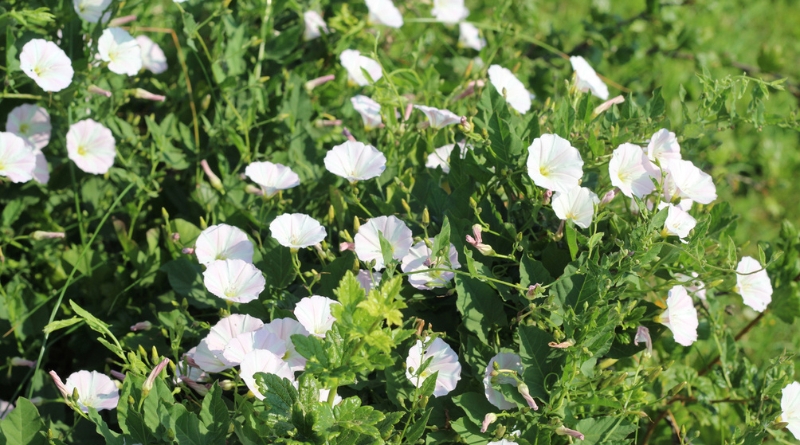
In my experience, one of the challenges of dealing with bindweed is that it can look a lot like other plants. I once spent an afternoon yanking out what I thought was bindweed, only to realise later that I had accidentally removed a perfectly innocent morning glory plant (a non-invasive variety with brighter flowers – so be careful). Oops.
So, how can you tell if you’re dealing with bindweed? First off, look for its infamous heart-shaped leaves and trumpet-shaped flowers – those are telltale signs. Those thin, spindly vines wrap around neighbouring plants and bind to them (no points for guessing where the name comes from).
Another giveaway is the root system. Bindweed has roots that spread out in all directions, like a nuisance houseguest who takes up all the room on your couch. They’re white, fleshy, and can go down for what feels like metres.
If you’re still not sure, don’t be afraid to dig around a little. When you disturb bindweed’s roots, they release a distinctive smell that’s pungent and hard to describe, but once you’ve smelled it, you’ll never forget.
Understanding bindweed
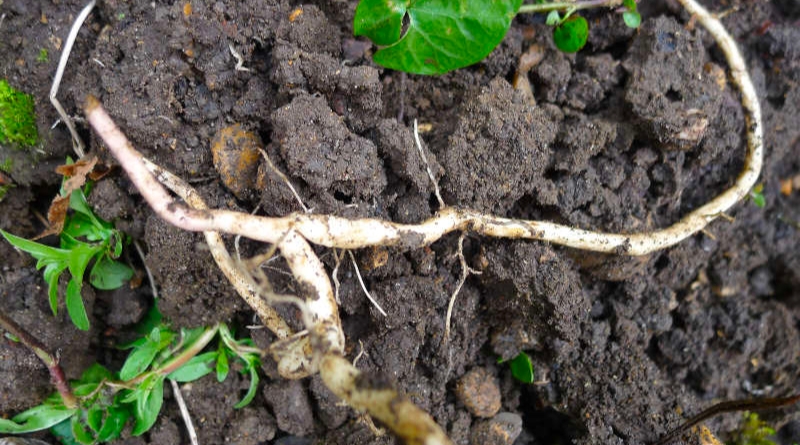
Before we discuss how to remove bindweed, I think it’s useful to understand how it behaves. As I previously mentioned, this plant is a member of the morning glory family, native to Europe, Asia, and naturalised in many parts of the world, including North America.
There are two main types of bindweed:
- Field bindweed (Convolvulus arvensis)
This is a creeping perennial vine that can grow up to six feet long and has small, white or pink trumpet-shaped flowers.
- Hedge bindweed (Calystegia sepium)
The hedge variety is a twining perennial vine that can climb up to 10 feet tall and has larger, white or pink trumpet-shaped flowers.
Both types of bindweed are known for their aggressive growth. It’s invasive because the plant reproduces through roots, with each one capable of producing hundreds of seeds per year. It’s so notorious that bindweed roots can spread up to 30 feet in all directions.
One of the reasons bindweed is so difficult to control is that it has a unique way of photosynthesising. Unlike most plants, which rely on their leaves to make food, bindweed can also use its roots to absorb sunlight and produce energy. This means that even if you manage to remove the aboveground portion of the plant, the roots can continue to grow and spread underground.
If you’ve got bindweed growing, you may notice it smothering nearby plants, preventing sunlight from reaching them. This makes it a particularly insidious weed, as it not only competes with other plants for resources but actively harms them.
Bindweed Prevention
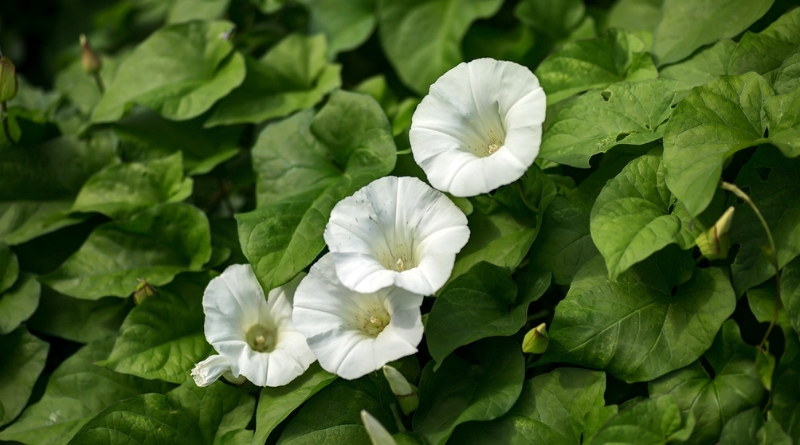
I prefer to use the word “prevention” rather than “eradication” when talking about bindweed. The reason is that completely removing it from your garden is practically impossible, but preventing it from growing and disturbing plants isn’t.
One of the best ways to prevent bindweed from taking over your garden is to start with healthy soil. Bindweed thrives in disturbed, compacted, or nutrient-poor soil, so taking steps to improve your soil quality can help prevent bindweed from gaining a foothold.
Adding organic matter, such as compost or well-rotted manure, to your soil can improve its structure and fertility, making it easier for your plants to grow and compete with bindweed. Coco Coir is one of my favourite natural composts. I also like to use raised beds or containers to avoid disturbing the soil.
Another important aspect of prevention is plant selection. I recommend choosing plants that are strong competitors and can thrive even in the presence of bindweed. Examples include native plants, groundcovers, and perennials with deep root systems.
Here are 5 of my favourite bindweed competing plants:
- Sweet Woodruff (Galium odoratum): A shade-loving ground cover that can quickly spread and form a dense mat, making it difficult for bindweed to establish.
- Himalayan Balsam (Impatiens glandulifera): Its rapid growth and shade-casting canopy can suppress the growth of bindweed.
- French Marigold (Tagetes patula): French marigold produces a natural chemical that suppresses bindweed growth.
- Perennial Geraniums: These low-growing plants have foliage that can shade out bindweed, making it difficult for it to establish.
My final bindweed prevention tip is to stay vigilant and cut out shoots and flowers as soon as you see them. Don’t bother pulling at the roots, instead cut the sprouts at soil level and starve the plant of photosynthesis. The earlier you catch the problem, the easier it is to control — but more on that next.
Bindweed Control methods
If you’re dealing with a serious infestation, prevention alone may not be enough. Fortunately, there are several methods I’ve resorted to for controlling bindweed, including cultural, mechanical, and chemical.
We’ve already discussed using cultural control methods, such as improving soil quality, planting strong competitors, and using mulch or groundcover plants to smother bindweed. Likewise, physically removing the bindweed, either by digging it up or pulling it out by hand, can help to stop plants from becoming suffocated. This can be time-consuming and labour-intensive, but it’s also the most environmentally-friendly option.
However, I believe the most effective method is chemical control. This involves using herbicides to kill the bindweed. While this can be an effective method, it’s important to use herbicides safely, responsibly, and limit yourself to the lowest effective dose possible. You might also want to consider using organic or natural herbicides as an alternative to chemical options. No matter which control method you choose, be patient and persistent.
Stay positive
Bindweed is one of the most frustrating and difficult plants to control in your garden, but using the above methods will go a long way to preventing growth.
It’s important to remember that controlling bindweed is an ongoing process, and it may take time and patience to achieve lasting results. By staying vigilant and persistent, you can create a garden that is less hospitable to bindweed and more conducive to the growth of the plants.
Good luck!
